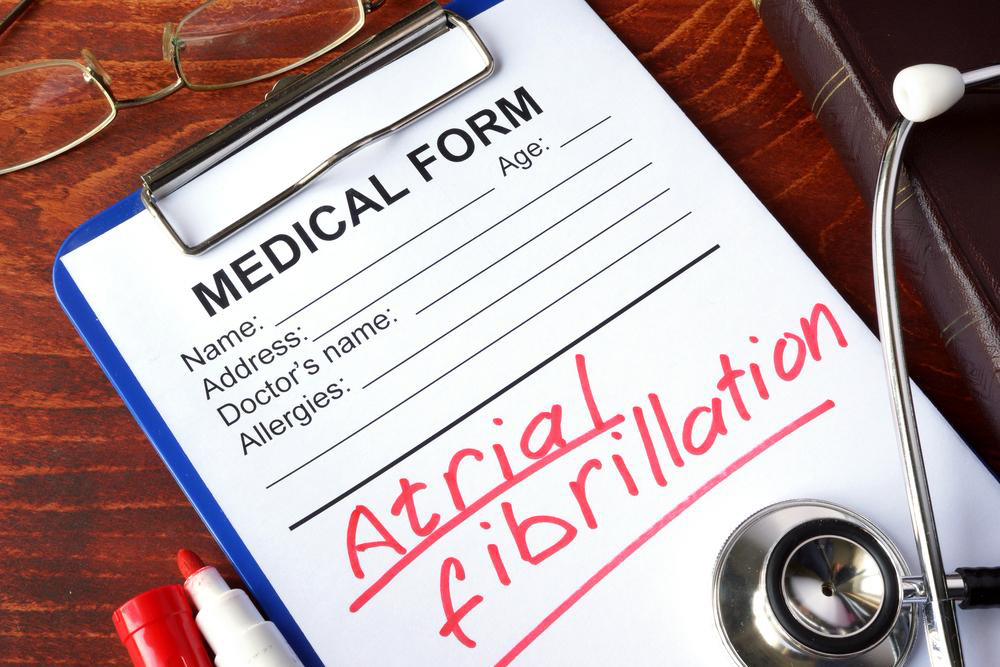A Comprehensive Guide to Atrial Fibrillation: Causes, Symptoms, and Effective Treatments
This comprehensive guide explores atrial fibrillation, including its causes, symptoms, and the latest treatment options. Learn how to identify AFib, understand its risk factors, and discover effective management strategies such as medications, procedures, and lifestyle changes to prevent serious complications like stroke. Perfect for individuals seeking detailed health insights and understanding of this common arrhythmia.

Comprehensive Understanding of Atrial Fibrillation: Causes, Symptoms, and Proven Treatments
Introduction to Atrial Fibrillation
The human heart is a marvel of biological engineering, composed of four chambers that work synergistically to pump blood and supply oxygen and nutrients throughout the body. These chambers include the right and left atria, which receive blood, and the right and left ventricles, which pump it out to the lungs and the rest of the body. The heart's rhythm is primarily regulated by the sinoatrial (SA) node, often referred to as the heart's natural pacemaker. Under normal circumstances, the electrical signals generated by the SA node cause the atria to contract rhythmically. These signals then pass through the atrioventricular (AV) node to the ventricles, ensuring coordinated contraction and effective blood circulation. However, disruptions in this electrical signaling can lead to rhythm irregularities, such as atrial fibrillation (AFib).
What is Atrial Fibrillation?
Atrial fibrillation is a common type of arrhythmia characterized by chaotic, rapid electrical impulses in the atria. Instead of the usual organized contraction, the atria quiver or fibrillate irregularly and rapidly, which can interfere with the heart's ability to pump blood efficiently. The irregular heartbeats can be subtle or quite noticeable, depending on the severity of the condition. Some individuals may experience no symptoms at all, a state known as asymptomatic AFib. Others might report palpitations, a fluttering sensation in the chest, irregular heartbeat, fatigue, dizziness, shortness of breath, or chest discomfort. The disorder not only impacts quality of life but also carries serious health risks, including the increased likelihood of blood clot formation within the atria.
One of the gravest concerns with AFib is the risk of stroke. When blood pools in the irregularly contracting atria, clots can form. If a clot dislodges, it can travel through the bloodstream and block arteries in vital organs like the brain, leading to an ischemic stroke. Therefore, effectively managing AFib is vital to reduce the risk of severe complications and improve patient outcomes.
Causes and Risk Factors of Atrial Fibrillation
Understanding what causes AFib can help in prevention and management. Several factors may contribute to the development of atrial fibrillation, including underlying heart conditions, lifestyle factors, and systemic diseases. Common causes and risk factors include:
Hypertension (high blood pressure): Elevated blood pressure is one of the most significant risk factors for AFib, often leading to structural and electrical changes in the atria.
Coronary artery disease: Blockages in the coronary arteries can impair heart function and predispose to arrhythmias.
Heart valve problems: Malfunctioning valves can alter atrial pressure and size, contributing to fibrillation.
Heart failure: Reduced cardiac efficiency can promote electrical instability in the atria.
Thyroid disorders: Both hypothyroidism and hyperthyroidism can trigger arrhythmias.
Alcohol consumption: Excessive or binge drinking episodes, known as 'holiday heart syndrome,' often provoke AFib episodes.
Obesity and diabetes: These systemic conditions increase the risk of developing atrial fibrillation.
Sleep apnea: OSA causes intermittent oxygen deprivation, which can damage the atrial tissue over time.
While some cases of AFib are related to these identifiable causes, others are idiopathic, meaning their origin remains unknown. The prevalence of AFib increases with age, making it a significant health concern especially in the elderly population.
Recognizing Symptoms and Diagnosing Atrial Fibrillation
Detecting AFib can sometimes be straightforward, especially when symptoms are prominent. However, since some patients are asymptomatic, routine screening plays a crucial role, especially among high-risk groups. Symptoms typically include:
Palpitations or a fluttering sensation in the chest
Irregular heartbeat or skipped beats
Fatigue and general weakness
Dizziness or lightheadedness
Shortness of breath during exertion or at rest
Chest discomfort or pressure
To confirm the diagnosis, healthcare providers use various tools. An electrocardiogram (ECG or EKG) is the primary diagnostic instrument, capturing the electrical activity of the heart in real time. Holter monitors or event recorders can be employed for continuous or extended monitoring, revealing episodes that might not be present during a brief office visit. Echocardiograms help evaluate the structural condition of the heart, while other tests like blood work and stress tests can provide additional information about underlying causes or associated conditions.
Effective Treatments for Atrial Fibrillation
Managing atrial fibrillation involves a multifaceted approach aimed at restoring normal heart rhythm, controlling the heart rate, preventing blood clots, and reducing stroke risk. Treatment plans are personalized based on the severity of symptoms, underlying causes, and overall health of the patient.
Medications are fundamental in AFib management. These typically include:
Rate control drugs: such as beta-blockers (e.g., metoprolol), calcium channel blockers (e.g., diltiazem), or digoxin to slow the heartbeat.
Rhythm control medications: antiarrhythmic drugs like amiodarone or flecainide aimed at maintaining a normal rhythm.
Anticoagulants: to prevent blood clots and reduce the risk of stroke. Common choices include warfarin and direct oral anticoagulants (DOACs) such as dabigatran, rivaroxaban, and apixaban.
In certain cases, medications alone may not suffice. Electrophysiological procedures like cardioversion can be employed to reset the heart's rhythm, either through:
Pharmacologic cardioversion: using antiarrhythmic medications.
Electrical cardioversion: applying controlled electrical shocks to restore normal rhythm, often performed under sedation.
For persistent or recurrent AFib, catheter-based procedures are increasingly common:
Catheter ablation: involves threading a catheter into the heart to destroy or isolate abnormal electrical pathways responsible for AFib. Techniques include radiofrequency ablation and cryoablation. This method has shown promising results, especially in patients with paroxysmal AFib.
Surgical interventions: such as the Maze procedure, create scar tissue within the atria to block abnormal electrical signals. Although more invasive, this approach is often reserved for cases where other treatments have failed or in patients undergoing cardiac surgery for other reasons.
In addition to pharmacologic and procedural options, lifestyle modifications are vital. Patients are advised to maintain a healthy weight, control blood pressure, limit alcohol intake, address sleep apnea, and avoid stimulants that may trigger episodes.
Preventing Stroke and Complications
One of the primary goals in AFib management is stroke prevention. Anticoagulation therapy plays a critical role in reducing this risk. The choice of anticoagulant depends on patient-specific factors, including bleeding risk, kidney function, and drug interactions. Regular monitoring and adherence to medication regimes are essential to ensure effectiveness and safety.
In conclusion, atrial fibrillation is a complex and potentially serious condition that affects millions worldwide. With advances in diagnostic techniques and treatment options, many patients can effectively manage AFib and lead active, healthy lives. Key to successful management is early diagnosis, comprehensive treatment planning, and lifestyle modification. If you experience symptoms or belong to a high-risk group, proactive medical consultation is essential for effective management and reducing long-term health risks.





